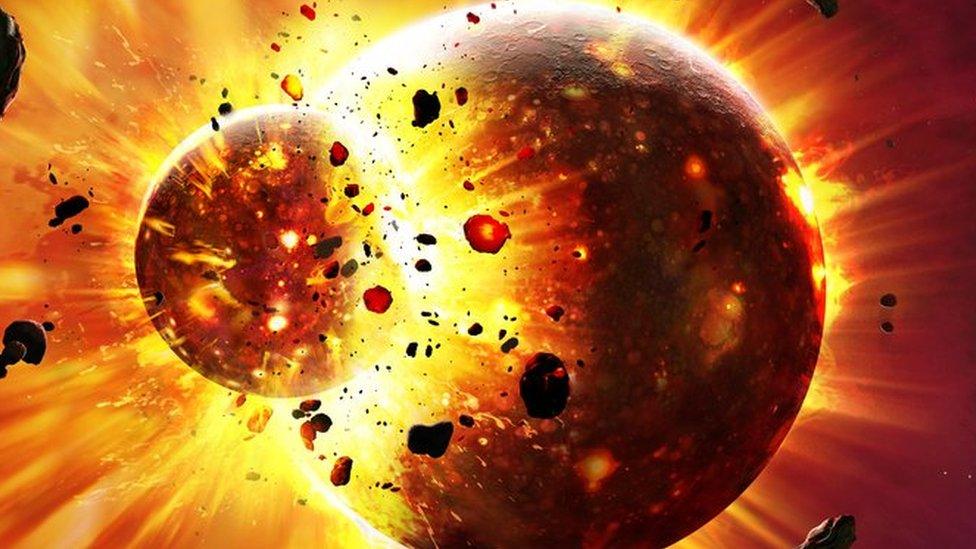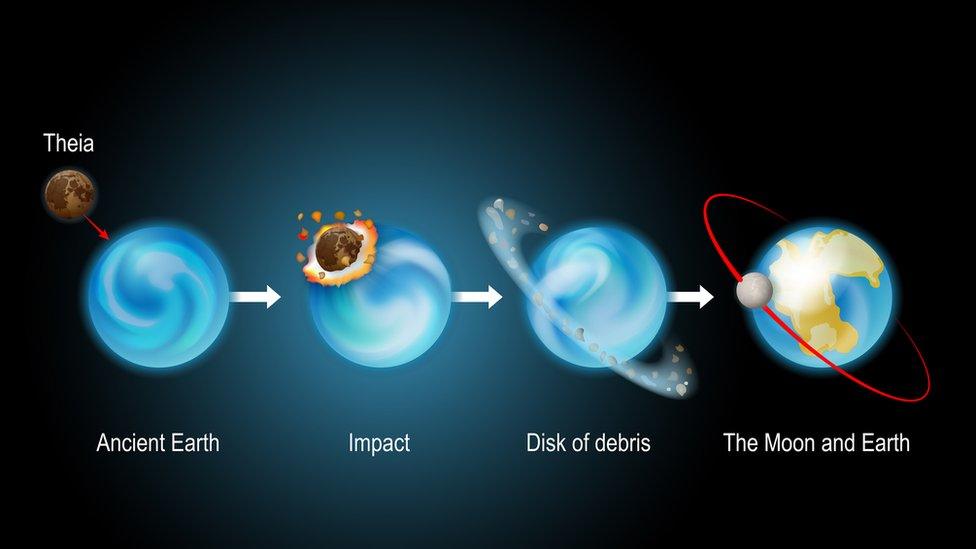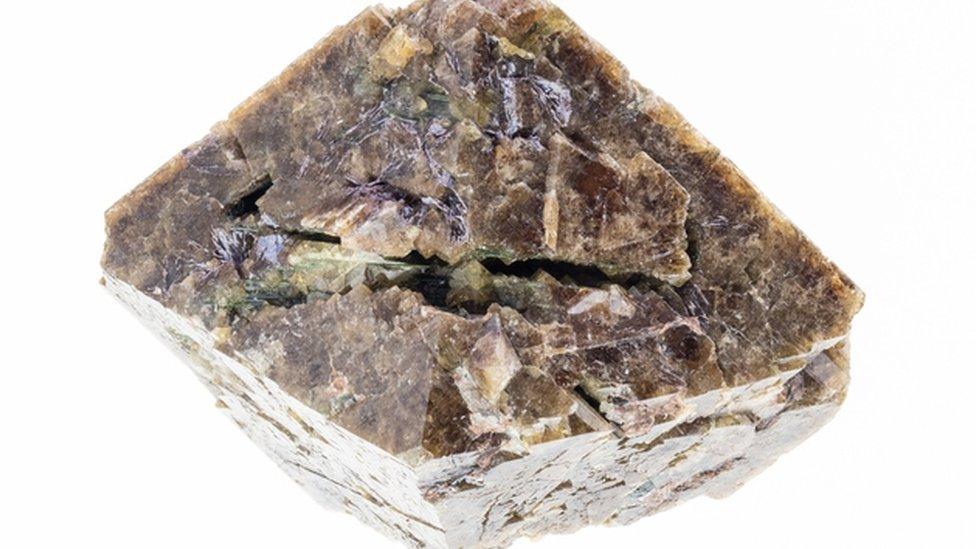Theia: Scientists think fragments of ancient planet lie in Earth's mantle
- Published
- comments

Did a huge explosion - featuring an ancient planet - form the Earth and Moon we know today
There's been some new research about an ancient planet - called Theia - that experts think helped form the Earth we know today.
Scientists think that Theia crashed into Earth billions of years ago, and formed the Moon.
It's still a theory, and scientists are still trying to find evidence for what Theia exactly was.
The impact of Theia helped continents to form, and scientists are now saying that fragments of the ancient planet have impacted volcanic activity on Earth.
What was Theia?

This is the current theory about how the Moon was formed - and how the modern Earth was born. In the third stage, you can see that debris from the ancient planet Theia caused rings around the Earth, like the ones that are visible on Saturn.
Scientists have a theory that an ancient planet, called Theia, crashed into Earth more than 4 billion years ago.
In this theory, part of Theia was swallowed up by the Earth and the impact of the blast shot magma from Earth's mantle into space.
This magma formed pieces of rock that swirled around Earth's orbit, and eventually formed into the Moon.
Earth is made up of different layers - like an onion.
However, unlike an onion, the centre of the Earth is a hot, metal core.
Outside of the core is the mantle, which is mostly solid rocks, but has areas of hot magma.
The last level above this is the crust - which is solid rocks, and what the continental plates are made of.
Where is Theia now?

This is a zircon crystal stone - and it's key to solving the mysteries of how Earth and the Moon formed
The evidence for Theia lies under the Earth's surface, and thousands of miles above Earth, on the Moon.
There are special crystals on the Moon, called zircon crystals, which are also found on Earth, and on Mars.
Scientists say they were formed when Theia's impact blew hot magma into space. This magma cooled, and formed these zircon crystals.
Deep under the Earth's crust, scientists discovered two large blobs of unusual material. One is under the Pacific Ocean, and the other is under the African continent.
They think this was formed by Earth swallowing up part of Theia. They think this means that the Earth is the way it is today - with the continents that we have - because of this big impact billions of years ago.
